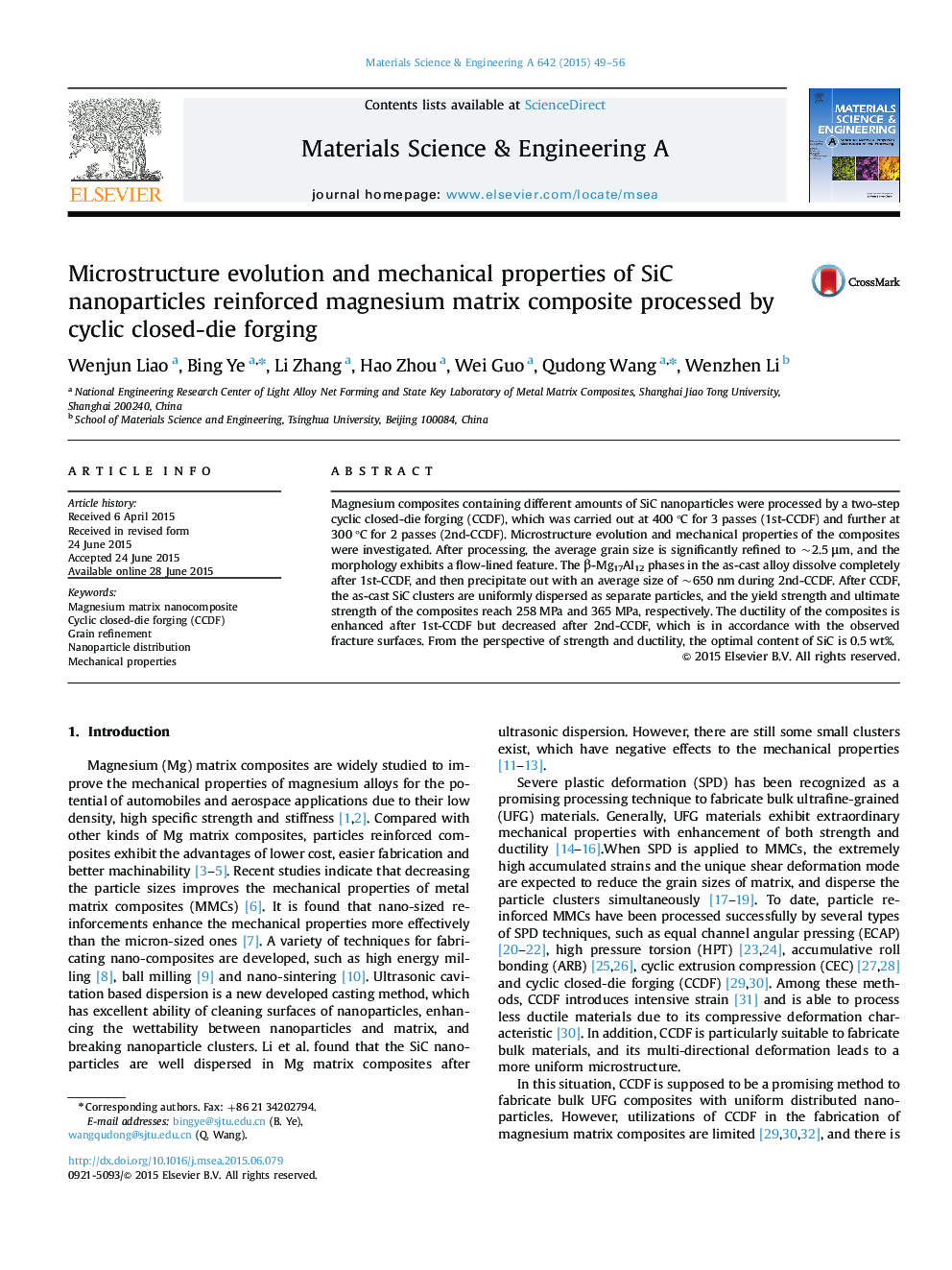| Article ID | Journal | Published Year | Pages | File Type |
|---|---|---|---|---|
| 7977175 | Materials Science and Engineering: A | 2015 | 8 Pages |
Abstract
Magnesium composites containing different amounts of SiC nanoparticles were processed by a two-step cyclic closed-die forging (CCDF), which was carried out at 400 °C for 3 passes (1st-CCDF) and further at 300 °C for 2 passes (2nd-CCDF). Microstructure evolution and mechanical properties of the composites were investigated. After processing, the average grain size is significantly refined to ~2.5 μm, and the morphology exhibits a flow-lined feature. The β-Mg17Al12 phases in the as-cast alloy dissolve completely after 1st-CCDF, and then precipitate out with an average size of ~650 nm during 2nd-CCDF. After CCDF, the as-cast SiC clusters are uniformly dispersed as separate particles, and the yield strength and ultimate strength of the composites reach 258 MPa and 365 MPa, respectively. The ductility of the composites is enhanced after 1st-CCDF but decreased after 2nd-CCDF, which is in accordance with the observed fracture surfaces. From the perspective of strength and ductility, the optimal content of SiC is 0.5 wt%.
Keywords
Related Topics
Physical Sciences and Engineering
Materials Science
Materials Science (General)
Authors
Wenjun Liao, Bing Ye, Li Zhang, Hao Zhou, Wei Guo, Qudong Wang, Wenzhen Li,
